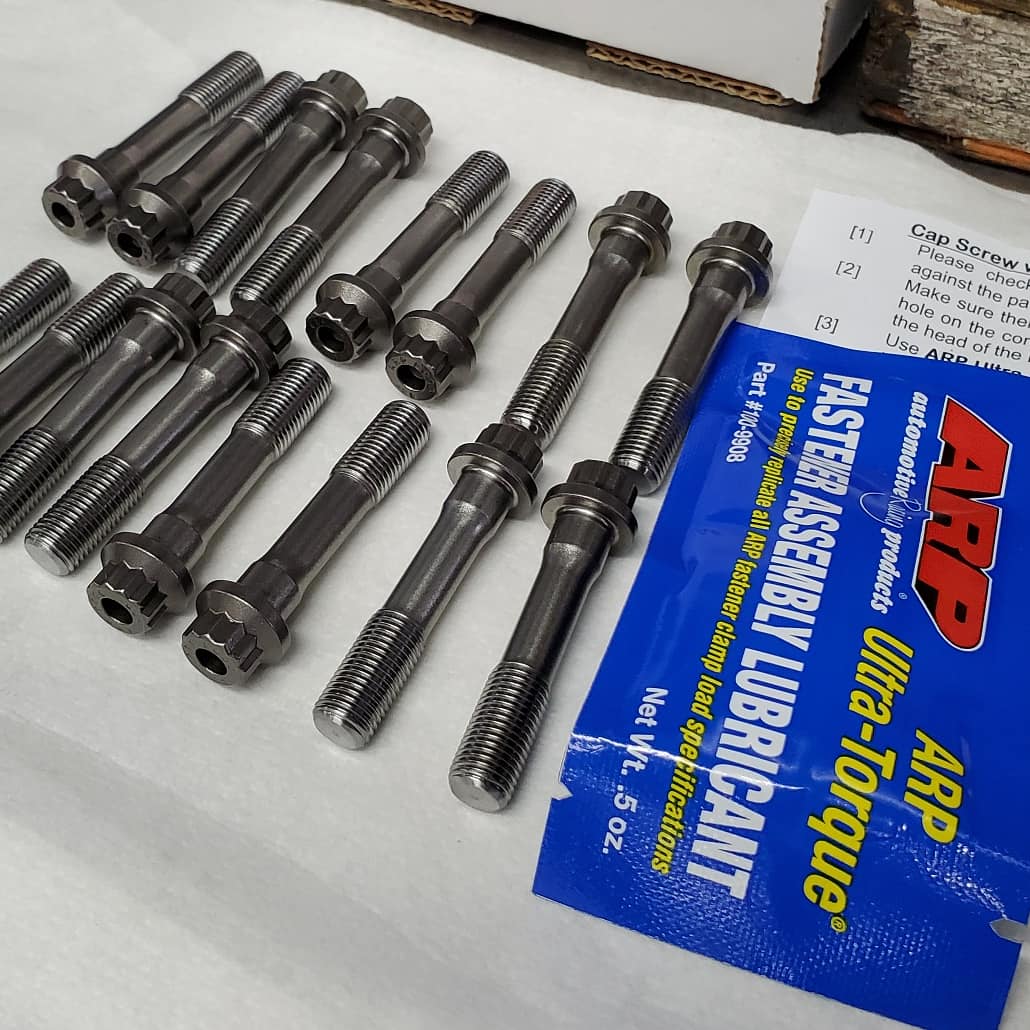The BMW S54 inline 6, S65 V8, and S85 V10 engines are some of our favorites. We maintain several that are nearing 150,000 miles. But, owners often ask us about the infamous rod bearings and how worried they should be about the possibility of failure.
Connecting rod bearing failure is catastrophic on any engine and will typically leave the vehicle in need of a complete replacement engine. We have seen these types of failures in a wide variety of engines, from Subaru EJs to newer BMW S63s. But, the problem is much more likely to happen in the S54, S65, and S85 for a few specific reasons.
Below is a brief overview of the factors that contribute to premature bearing failure, our recommendations on how to limit bearing wear as much as possible, and some information we have gathered about BMW rod bearings that owners may find interesting.
Factors That Contribute to Premature Bearing Failure
Before we talk about some of the potential causes of premature bearing failure, let’s talk about the makeup of the rod bearings.
In the above models, the clearances between the crankshaft journals and bearings are tighter than usual, especially in relation to the high RPMs that these engines are capable of. A tight clearance between the bearings makes it more difficult for oil to flow in between to provide a layer of lubrication and cushioning to prevent the two metals from rubbing together.
This design relies on a particular set of properties in the engine oil, allowing it to flow well enough to reliably get between a 1/1000 of an inch gap, but with a high enough viscosity to keep the metals separated.
Now, let’s look at some of the factors we mentioned.
Using Sub-Par Oil
Zinc dialkyldithiophosphates (ZDDP) are an important group of engine oil additives that form a protective layer when exposed to temperature and pressure, making them ideal for preventing bearings from rubbing together in high performance engines.
These motors were designed at a time when API SL-compliant oils were the industry standard. ZDDP was common in engine oils meeting the SL specification but starting in 2005, Phosphorus levels were reduced to extend the life of catalytic converters and O2 sensors. Zinc levels are not limited, but Zinc alone is ineffective without Phosphorous to bind to. The ZDDP protective layer is a sacrificial barrier, meaning that it is consumed and then replenished as the engine operates. But, using an engine oil beyond the point where its Phosphorus is depleted means the protective layer will wear away.
The Castrol 10w-60 motor oil originally used in these engines was chosen for its additive package but has had to be reformulated to meet the needs of newer vehicles and their emissions equipment in order to be compliant to API SM and SN standards.
Outdated Manufacturer Recommendations
BMW’s recommendation for the S54, S65, and S85 M engines was for owners to change the engine oil every 15,000 miles with oil that meets the BMW LL-01 specification. There is a growing list of engine oil brands that are no longer BMW LL-01-approved, so it is important to keep this in mind when selecting an engine oil.
Oils that meet API SM, SN, or SN+ are required to contain fewer than 800ppm of Phosphorus. It is our opinion that the newer oil formulas, plus the extremely long 15,000-mile oil change intervals, work strongly against the long term life of the bearings. It is also our opinion that the Castrol 10w-60 was chosen because of the mix of additives it included and not necessarily for its specific viscosity.
Castrol 10w-60, the newer Shell 10w-60 (BMW’s current supplier for the TwinPower Turbo branded oil) and many other 10w-60 oils that are marketed towards BMW M owners measure at the very bottom end of the SAE 60 viscosity range. After a short time in the engine, these shear down into the 50-weight range and many of them continue to fall into the 40-weight range long before the engine reaches 15,000 miles.
A high quality oil like Torco’s SR-1R and SR-5R will stay in its original viscosity range through the full oil change interval. This is why many experts are now seeing better results with a true 5w-50 versus a 10w-60 oil that starts overly thick and eventually becomes overly thin before it is changed out.

BMW Rod Bearing Maintenance
Owners of S54, S65, and S85 BMW engines should change their engine oil every 5,000 miles if they see a lot of high RPM use on the race track and every 10,00 miles at most for cars driven daily. The original rod bearings should be replaced every 60-80,000 miles, especially on vehicles which followed BMW’s 15,000-mile oil change recommendation. Consistent BMW maintenance is crucial for a high-performing vehicle. We recommend oils that exceed the API certifications in these engines for better wear protection.
Torco SR-1R 10w-60 is a great choice of oil for street cars that see some high performance driving events. Plus, it’s significantly less expensive than the original Castrol or BMW-branded oil. For drivers who frequent track or autocross events, Torco SR-5R will significantly reduce oil temperatures and provide an even higher level of protection. We recommend SR-5R 5w-50 for engines with original bearings and SR-5R 10w-60 for owners who have upgraded to extra clearance bearings.
Should You Replace Your BMW’s Original Bearings?
For owners who want to take the proactive step of removing the original bearings, we offer MRF Engineering rod bearings and custom ARP bolts that provide increased clearance to make it easier for oil to flow through, as well as an increased margin of safety.
Each bearing set is individually tested at MRF before shipping and is marked with a specific torque spec that will ensure proper bearing shape after they are deformed by the installation torque. These bearings are Calico CT-1 coated to provide an additional layer of protection before metal to metal contact.
We consider replacing S65 or S85 rod bearings with MRF’s coated, extra-clearance bearings to be a permanent solution so you won’t have to worry about replacing them again. The rod bearing replacement procedure includes fully draining and replacing the engine oil and filter, power steering fluid, and coolant. Engine mounts are removed to drop the oil pan so it’s a perfect time to replace worn or leaking mounts without any additional labor cost. A four wheel alignment is also included. The MRF bearing set is designed around 10w-60 viscosity engine oil, so we use Torco SR-5R 10w-60 after this upgrade is performed.


